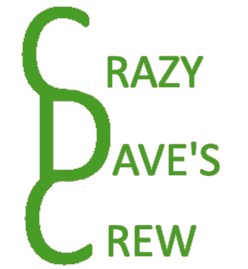National Ferris Wheel Day is celebrated in honor of George Washington Gale Ferris Jr. on his birthday, February 14th. George was born in 1859 in Galesburg, Illinois to George Washington Gale Ferris, Sr. and Matha Edgerton Hyde.
At age 5, his family sold their dairy farm in Illinois and moved to the Carson Valley in Nevada. George Washington Gale Ferris, Sr. moved his family to Nevada in 1864 as a gentleman farmer. He produced your typical crops, but Ferris also planted many varieties of trees, importing large numbers of Eastern ornamental trees to Carson City including hickory, black walnut, and chestnut. Many of Ferris’s imported trees still adorn the Capitol grounds. The Sears-Ferris House at 311 W. Third St. in Carson City was added to the National Register of Historic Places for Carson City in 1979.
The young George Washington Gale Ferris, Jr. left Nevada in 1875 to attend the California Military Academy in Oakland, California. He went on to graduate from Rensselaer Polytechnic Institute in Troy, New York in 1881 with a degree in Civil Engineering.
After Graduating, George started his career working with the railroad industry and was focused on bridge building. He eventually moved to Pittsburgh, Pennsylvania and founded his own company, G.W.G Ferris & Co. The company tested and inspected metals for railroads and bridge builders. The Ferris home at 1318 Arch Street in the Central Northside neighborhood of Pittsburgh, Pennsylvania was added to the list of City of Pittsburgh Designated historic Structures on June 28, 2001.
Invention of the Ferris Wheel
The announcement of the World’s Columbian Exposition to be held in Chicago in 1893, drew Ferris back to his birth state of Illinois. The directors of the Exposition issued a challenge to American engineers in 1891 to create a monument for the fair to outdo the Eiffel Tower, which was completed only a year earlier.
The directors had said they wanted something “original, daring and unique.” Ferris took this challenge seriously creating several different ideas, before finally settling on the Ferris Wheel. He sketched his original designs out on napkins one evening in a Chicago chophouse.
Ferris proposed a wheel from which the visitors would be able to view the entire exhibition, however, the planning commission feared his design could not possibly be safe. Ferris was not willing to give up and spent $25,000 of his own money to get safety studies and obtained $600,000 from investors.
With this favorable information, the planning commission agreed to allow the construction to begin. They hoped the admissions from the Ferris Wheel would eventually pull the fair out of debt and make it profitable.
At its completion, the Ferris Wheel had 36 cars, fitted with 40 revolving chairs and able to accommodate up to 60 people for a total capacity of 2,160. It carried 38,000 passengers daily at the Exhibition. It stood at 264 feet tall between two 140 foot towers.
At 50 cents per ride, the Ferris wheel earned a whopping $723,805.50 at the 1893 fair.
Unhappy Endings
After the fair, Ferris spent the next two years in litigation claiming the fair management had robbed him and his investors of their portion of the profits. In 1896, his wife left him and in November he died bankrupt and along at Mercy Hospital of Typhoid Fever. His ashes remained a the Pittsburgh crematorium for over a year, waiting for someone to take possession of them.
As for the wheel, it was dismantled after it closed in April of 1894 and stored until the next year when it was rebuilt in the Lincoln Park neighborhood of Chicago. The Ferris wheel operated here from October 1895 until 1903 when it was bought by the Chicago Wrecking Company.
It was again dismantled and moved to St.Louis for the 1904 World’s Fair where it earned just $215,000. Following the fair it was destroyed by dynamite on May 11, 1906, thus ending the story of the very first Ferris Wheel.









Leave a Reply
Want to join the discussion?Feel free to contribute!